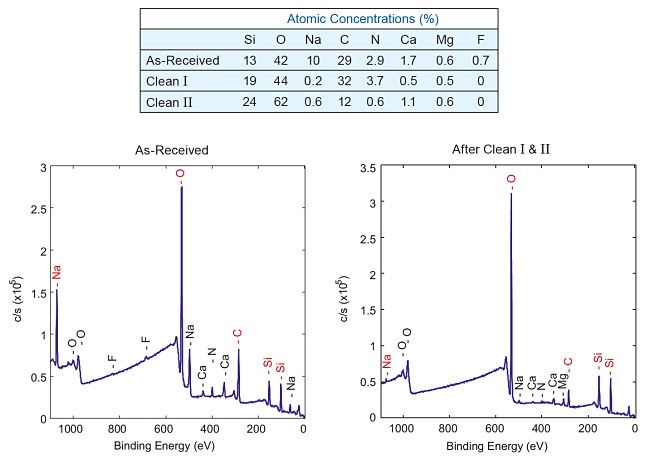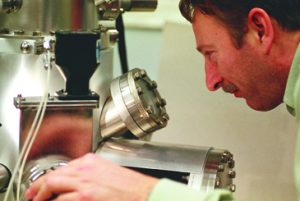Evaluation of Cleaning Efficacy
Home » Evaluation of Cleaning Efficacy
The removal of surface contamination is a common goal of all cleaning processes. Unfortunately all cleaning steps are not equally effective, and some processes can actually leave behind additional contaminants. X-ray Photoelectron Spectroscopy (XPS) is a surface analysis tool that is well qualified to characterize cleaning processes. XPS’s ability to quantify the concentration of all elemental species except hydrogen and helium makes it possible to monitor the efficiency of contamination removal as a function of cleaning processes.
The spectra shown below are from a glass sample before and after several cleaning steps. Peaks for sodium (Na) and carbon (C) decrease in intensity after cleaning, while peaks from the glass substrate (e.g. silicon and oxygen) increase in relative intensity as the surface gets cleaner. The table shows the concentration of the elements before and after cleaning. The first step reduces the level of Na, but increases the C concentration. The subsequent process step removes a majority of the C, leaving a cleaner glass surface.

Would you like to learn more about Evaluation of Cleaning Efficacy?
Contact us today for your evaluation of cleaning efficacy needs. Please complete the form below to have an EAG expert contact you.
